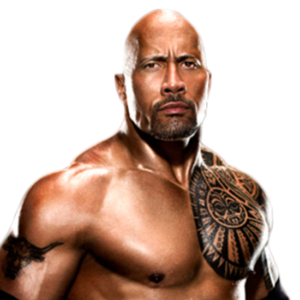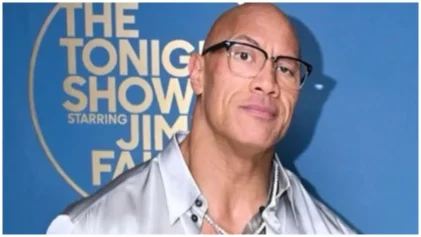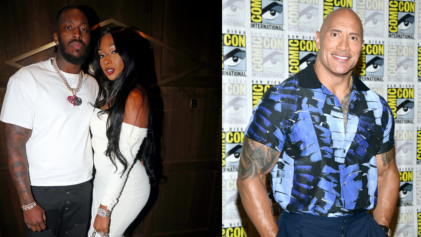By Shakeitta McCord
San Andreas opened last weekend to a flurry of criticism from reviewers with headlines like “How Scientifically Accurate is San Andreas?” “Fact-Checking San Andreas: Are Earthquake Swarms For Real?” Simply put, the disaster movie starring Dwayne Johnson is a hard pill to swallow for some– a gross hyperbole depicting a nearly impossible swarm of earthquakes that rock the state of California, and a one-man rescue team who survives to the end, come hell or high water–and there is some really high water. Yet, these are not the hardest pills to swallow for San Andreas. On the contrary, viewers can appreciate the horrific severity of real-life earthquakes that level whole towns, bury men, women and children indiscriminately, and shatter thousands of lives in its wake. Viewers can entertain the possibility, however small the improbability, of a 9.6 earthquake traveling up the entire San Andreas Fault.
No, the hardest thing to believe about San Andreas is Dwayne Johnson’s all-white onscreen family. His character Ray’s wife and two daughters are Caucasian. His daughters are not ambiguously Caucasian or “mixed-looking.” They are definitely and noticeably white. No kinky, curly hair, no semi-tanned skin. For those unaware of Johnson’s heritage, he is half black and half Samoan (a Polynesian people). His father is an African American former wrestling tag team champion by the name of Rocky Johnson and his mother is the daughter of late Samoan wrestler Peter Maivia.
It doesn’t take an anthropologist to see that Johnson is a Black man. He identifies as Black, yet his race has eluded audiences for years. A season 4 episode of Family Guy perfectly captured the lack certainty of this ambiguously ethnic man when an off-camera voice ponders Johnson’s roots, saying he’s “Black, I think. At least part Black or Hispanic, and possibly Filippino…If he’s Black, it’s definitely diluted. I mean, one of his parents must be white.” Therein lies the general consensus: he’s everything and nothing.
That image is due, in part, to his film roles. The handsome 6′ 5″ actor is routinely cast in racially ambiguous parts. There have been only a handful of movies that stand out as having indicated Johnson’s Blackness. His film G.I. Joe: Retaliation shows him as the father to black children, Walking Tall casts a black man as his father, and Be Cool features the WWE superstar wearing an Afro wig. At the end of the latter film, he also proudly displays his the Samoan heritage by doing a dance from the culture.
Almost all his other roles ignore his ethnicity altogether. It’s not necessary to give him cornrows, dress him in baggy pants, and have him adopt a slang vernacular in order for us to see he is Black, nor is it required to cast him in all-Black films, but at the very least, he should be depicted more in the company of other Black people and appear to actually have something in common with them. His movies Gridiron Gang, The Other Guys, and The Gameplan were a step in the right direction, showing Johnson with a certain fellowship to other Black men, but those films are few and far between.
San Andreas, for its part, did also make efforts in the area of diversity. The best friend of Johnson’s character Ray is a Black man and Ray even has a short exchange with a young African American woman who wears her natural hair in an Afro. Undoubtedly, the latter is an important acknowledgement of the Zeitgeist as it pertains to Black women in present day, yet all those steps in the right direction can’t overcome the glaring whiteness of Ray’s family.
The moment we get a glimpse of Ray’s daughter, Blake, sunbathing by her mother’s large, upscale pool, we are struck by her pale skin on full display. Early in the film we also catch Ray staring longingly at an old photograph of his once-happy family, but it feels disingenuous, as does his phone conversation with his daughter. There’s a disconnect. In a moment intended to be heartfelt, it is hard to feel for his character. It’s hard to buy into the onscreen relationship when you can’t believe that these two people would be related in the first place. It is only later in the film when emotions become heightened that the father-daughter relationship feels authentic.
This is not to say that it is impossible for a Black and white interracial couple to bare children who look entirely white. It has been known to happen. We could assume that this is the reason for Blake’s appearance, but in the case of Dwayne Johnson’s career, the actor is so frequently cast as non-Black, without a racial identity, or in the company of whites only that it is hard to imagine it isn’t intentional.
It’s hard to believe the color of his skin doesn’t play a part. There must be a design here. He’s light enough to pass for other ethnicities or to pass without one, so Hollywood plays it up. In The Mummy Returns and The Scorpion King he is an Akkadian, in Hercules he is presumably Greek. Hollywood has done such a great job at creating a racially ambiguous image for Johnson that they were able to cast him as the lead voice for a red-headed white man in the animated movie Planet 51 without raising an eyebrow.
In films like Race to Witch Mountain and Faster he’s just an action star, race be damned! On the surface that seems great. In an ideal world we will see Black actors and actresses get more roles that aren’t contingent on their skin color. We’ll see them cast as more dynamic, unconventional characters. Audiences will see this without giving skin color a second thought. Movies with a Black cast will be movies for everybody, the same as movies with a white cast are. While we are taking steps in that direction, frankly speaking, we just haven’t arrived there.
This isn’t a case of studios accepting Johnson for being Black and not caring about his race. This is a case of them ignoring it altogether and pretending he doesn’t have one. It’s a situation we also see repeated with other biracial actors. Vin Diesel is cast as white or ambiguously ethnic despite identifying as a “person of color.” His father is African American and his mother is Italian.
Prison Break star Wentworth Miller is often cast as white, too. Most people are surprised to learn he is half Black. All of Johnson’s love interests have been either Caucasian, Latino, or Asian. Not once yet has he starred opposite a Black female love interest. Black women are also missing from Diesel’s onscreen romances.
It would be naive to think this is coincidence or that they’ve simply been accepted in traditionally white mainstream lead acting roles. Studios have accepted Denzel Washington as a Black leading man in the mainstream. In contrast, they have ignored Johnson’s and Diesel’s race and packaged them as “other” so that they would be acceptable despite being Black leading men in mainstream roles. And as long as they’re “other” they can be billed with white family and non-Black romantic interests, reach the widest—also whitest—audience, make lots of money, and not offend anyone or put them off.
Studio executives have done all this instead of rightly realizing that Dwayne Johnson is the People’s Champ. His career as an actor was built on the love and widespread acceptance from wrestling fans all around the world with various backgrounds who knew full-well his heritage and never cared that he was half Black and half Samoan. Fans who would pay to see him in anything simply because he is the most electrifying man in sports entertainment. It was never necessary to cultivate an image that denied the existence of evidence of his culture.
In trying to ensure he is appealing to everybody they’ve disconnected him from the people who should find him the most relatable. Here is an extremely hardworking Black man, an action star, the top grossing actor in the world, the biggest name in the business lately, making four movies a year, starring in a new HBO series, all while still putting butts in seats at the WWE as a professional wrestler, and the studios would have the world believe that he’s anything but Black.
The good news is, Johnson has built enough clout in Hollywood that if he spoke up on his lack of Black love interests, Black onscreen children, or Black onscreen identity, someone might listen. At what point does he tell Hollywood, “I am a Black man, let’s just modify this script a bit to reflect that?” We can only hope to see this in the future.
There is a great exchange in Fast and Furious 6 between Tyrese Gibson’s character Roman and Johnson’s character Hobbs when Roman jabs, “Hey Mia, better hide your baby oil” and Hobbs quickly quips back, “You better hide that big a** forehead.” It was a hilarious unexpected moment that demonstrated the type of playful display of masculinity that Black men often exert over one another through insult—a subtle affirmation of Johnson’s inclusion in the African-American culture, and that’s all we ask. Nothing over-the-top, just don’t ignore it.



